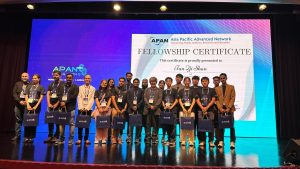Danao, Bohol in the Philippines still suffers from lack of broadband Internet access. It has multiple geographically isolated and disadvantages communities that have limited access to health services owing to their geographic location and sociodemographic profile. The potential of Open Radio Access Network (Open RAN) technology in remote areas like Danao, Bohol, is transformative. Open RAN, which leverages open interfaces and vendor-neutral hardware and software, allows for greater flexibility and cost efficiency in deploying telecommunications infrastructure. In areas where traditional network infrastructure is lacking due to financial and logistical constraints, Open RAN presents an opportunity to bridge the digital divide. By reducing dependency on proprietary systems and enabling interoperability among different vendors, Open RAN can facilitate the rapid deployment of mobile networks in remote regions. This can significantly enhance connectivity, providing reliable and high-speed internet access to communities that were previously underserved.
To determine if Open RAN will work in Danao, Bohol, the Asia OpenRAN Academy (AORA) with support from USAID conducted a systematic measurement of available infrastructure. Preliminary results showed that while the terrain remains to be challenging, Open RAN also offers opportunities to surmount these difficulties.
Open RAN can have profound implications for health applications, particularly telemedicine. Telemedicine relies heavily on robust and reliable internet connectivity to facilitate real-time consultations, remote diagnostics, and continuous monitoring of patients. In remote areas, where access to healthcare facilities is often limited, the ability to connect with healthcare providers through telemedicine can be life-saving. With Open RAN enabling improved network coverage and capacity, residents of Danao can benefit from virtual consultations with specialists, timely medical advice, and even emergency interventions, all from the comfort of their homes.
Furthermore, the adoption of Open RAN in Danao can stimulate local innovation and development in health informatics. Local healthcare providers can collaborate with tech developers to create tailored telemedicine solutions that address specific health challenges in the community, which can also further enhance the capacity of the local health care provider network. This can include mobile health applications for chronic disease management, health education platforms, and remote diagnostic tools. By fostering a more connected and health-informed population, Open RAN not only enhances healthcare delivery but also contributes to the overall socio-economic development of remote areas like Danao, Bohol.







